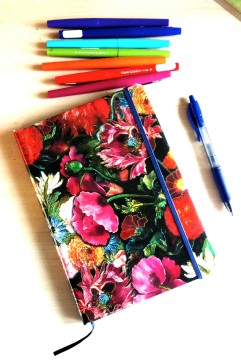
Something struck me today. Normally on a Sunday evening (the time when I’m writing this) I have a little cascade of messages from AO3 and fanfiction.net telling me who has been liking and bookmarking my work, who has been commenting, and so on. They come most days, but you always get a lot more at the weekend because more people have time to read at weekends. It is like having a little round of applause at the end of the week, to spur you on into Monday, and as every fanfic writer knows, those responses to your work can become your addiction!
As I opened up the latest collation of ‘kudos’ from my works on AO3, I realised that these missives have become a lot more incidental to my world than they used to be. I used to hang on every single one, checking my email obsessively to see what had arrived. Fanfiction has definitely changed in its importance for me. Now, I’m obviously delighted that people like my work, but my self-esteem no longer rests so strongly on it. It’s a really nice little pat on the back, but its importance to me has lessened, and for one really crucial reason.
My focus has changed.
My main writing focus is now on my novel, on my original work. Yes, I am still writing fanfics, still composing them in my head at night when I go to bed, but my main efforts at my desk are to do with developing original fiction. My novel. Or whatever this thing is going to be that I am working on.
This swap is a huge change for me, and realising it is so exciting. It means that all the effort I have been putting in to developing a writing habit is actually working. This is the payback. I’m now on the yellow brick road that I want to be on. I’m not saying the other yellow-brick road with all the gorgeous men having rampant sex isn’t nice. It’s just it wasn’t the one I was planning to follow, that’s all.
Writing fanfic has become something of a ‘warm-up’ exercise for me, the way ballet dancers practice at the barre before they get down to the nitty-gritty of doing the Dying Swan! I love writing it. It exercises the muscles, gets the lumps out of the prose, provides a field for juicy little metaphors to pop up that I can use later in something original.
Now the original work is where I am headed, I feel excited, free. It is slowly evolving, this thing that I am writing. I work on it most days, and it gives me clues, spits out little gems, turns its head and gives me a flirtatious wink or a little giggle every now and again. It is starting to come into better focus.
I’m so excited. And relieved.
I feel like I’ve got my voice back.
I shall never stop being grateful to fanfiction for all it has taught me. I shall always love it, and read it, and no doubt continue to write it in some form or another. But I’ve managed to step off the Sherlock and Lewis version of the M25, going endlessly around in circles and getting stuck in traffic queues. Now I’m on the Great North Road, heading to Novel Land, and I can’t wait to see what I find there!
Happy Creating,
EF



